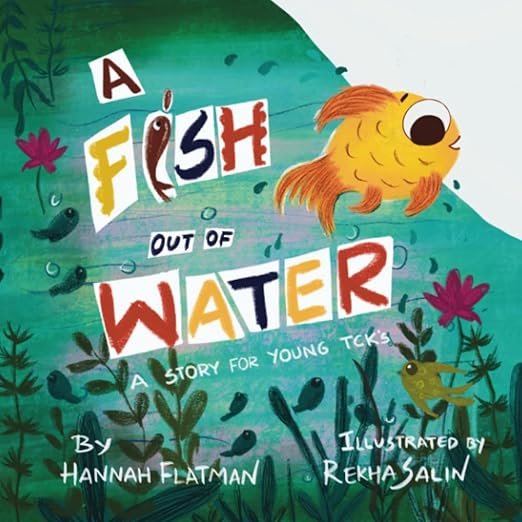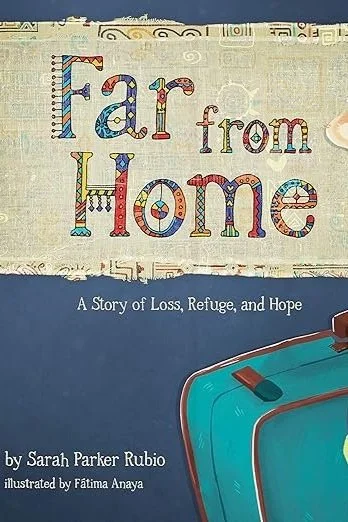The Process of Transition
Change and transition are often used interchangeably, however there is a difference. In Third Culture Kids: Growing up Among Worlds, the authors describe change and transition in these ways:
Change: “The physical or external process of moving from one location or state of being to another. It’s what happens outside or to you. Change is often fast-an external event or series or events. Change is inevitable.” (p. 232).
Transition: “Is the passage to the change. It focuses on the psychological and emotional changes people go through to arrive at the new place. Transition is the process of adapting to the changes we experience. Transition is an internal and time consuming process. A strong and healthy transition (stable, comfortable, and self-assured) is not guaranteed.” (p. 232).
Most simply, transitions can be broken down into 5 stages:
Involvement
Leaving
Transit (In Motion)
Entering
Re-Engagement
Change v. Transition
Both change and transition are common for TCKs because many of them experience high mobility, whether because they move themselves or those they love move. But with high mobility comes grief, and often the grief that TCKs experience can become long-term unresolved grief if the losses incurred are not processed.
Since change is inevitable, it is important to “learn the art of good transitions” so that the experience of TCKs can be normalized and they can avoid the result of long-term unresolved grief.
One way to prepare for and pursue healthy transitions is by starting with leaving by “building a RAFT”.
(Pollock, Van Reken, Pollock, 2009)
Reconciliation: This is focused addressing and resolving conflict so that there is repair in relationships before leaving.
Affirmation: It is an expression of gratitude and value in the relationships of the place you are leaving.
Farewell: This is the real act of saying goodbye to people, places, experiences, and animals.
Think Destination: Focuses on preparing for what is next and thinking about expectations for the next step.
For younger children, the acronym SHIP can be used:
“S- Saying sorry and I forgive you (Reconciliation)
H- Heartfelt thanks for each other (Affirmation)
I- It’s time to say goodbye (Farewells)
P- Plan for the new place (Think destination)”
(Pollock, Van Reken, Pollock, 2009, p. 347)
Leaving Well: Building a RAFT
Processing Transition
Transition Bridge
Originally laid out by Marion Knell in her book Families on the Move, Ulrika Ernvik details the stages of the transition bridge on her website and in her book Third Culture Kids: A Gift to Care For. The transition bridge functions from the same 5 stages of transition, but adds more details. In preparing and throughout a transition, families can use this picture as a tool to understand where they are on the bridge and make sense of feelings they may be experiencing.
Human Needs
In Third Culture Kids: A Gift To Care For, Ernvik describes humans’ needs being broken down into four categories: “love and belonging, joy and rest, power and capacity, and freedom, within boundaries.” She goes on to lay out a more detailed list of needs that every human has. During times of transition, it can be expected that the urgency to meet these needs would increase. For more information on these needs, click here.
Enough to eat and enough sleep.
To be loved and to show their love.
To be touched and to touch.
To be seen and to be alone.
To connect and to be free.
To be needed and to relax.
To know what is expected from them and to do it their own way.
Other people to set up boundaries and to have their own boundaries respected.
To be in control and to trust that someone else is in control.
To have power over their own lives but they don’t want to have power over others’ lives.
To feel that they are capable but they also need new challenges.
To understand and to be understood.
To show their feelings of sadness, anger and happiness.
To forgive and to be forgiven.
Protection but not to be overprotected.
A hope and a meaning
(Ernvik, 2019)
Unresolved Grief
Unresolved grief can be defined as “grief that comes from recognized and unrecognized losses, but one that has never been mourned in a healing way,” (Pollock, Van Reken, Pollock, 2009, pg 81). Transition naturally comes with losses, even if there are exciting gains. Grief can become unresolved grief for TCKs for five reasons:
Lack of awareness of the hidden losses
Lack of permission to grieve
Lack of time to grieve
Lack of comfort which validates grief
Lack of understanding of the grief process
(Pollock, Van Reken, Pollock, 2009, p. 86)
If these losses are not processed and mourned, then they will pile on top of each other and potentially deepen the pain.
When grief is unresolved, it can be expressed in many different forms. However, it will always show itself and will likely seem to be focused on completely unrelated events.
(Pollock, Van Reken, Pollock, 2009)
Expressions of Unresolved Grief:
Denial
Anger
Sadness/Depression
Bargaining
Withdrawal
Rebellion
Vicarious Grief
Delayed Grief
(Pollock, Van Reken, Pollock, 2009)
Resources on Grief
There are two books that specifically focus on processing grief. The first is geared toward parents in learning how to help their children grieve and process unresolved grief. This is called The Grief Tower by Lauren Wells. Unstacking Your Grief Tower by Lauren Wells is written for Adult TCKs who may have never learned how to process their unresolved grief. TCK Training also hosts a workshop with the aim of Teaching Your TCKs To Process Grief Before They Are Grieving.
Stress in Transition
The red zone is a period of transitional stress where the brain is flooded with stress hormones. It is normal for everyone to experience the Red Zone during big transitions; however it is unhealthy, especially for developing brains, to stay in the Red Zone for a long period of time.
According to TCK Training, during transitions there are points where it is expected that a child would be in the red and yellow zones. When a family is getting ready to move, children will often enter into the yellow zone followed by the red zone around 3-6 months before departure. When a family arrives in their new location, it is expected that that in the first 2-4 weeks children would be in the yellow zone. Around 3 months, it is likely that children will enter into the red zone. Within the 3-6 month range from arrival in a new location, children will most likely return to the yellow zone, but have a “6 month slump” into the red zone at six months. Finally, somewhere in the 6 month-12 month range since arrival, children will return to the green zone. If after a year in the new location, a child is still in the red zone, it is recommended to seek additional help. (TCK Training)
What is the Red Zone?
Red Zone
Big emotions
Developmental reverting
Lack of engagement
Behavior changes
Lack of ability to learn
Depressive or anxious demeanor
Yellow Zone
More “good” days
Starting to look forward to things
Fewer behavior challenges
Starting to engage
More typical demeanor
Green Zone
Can name friends who they enjoy spending time with
Have hobbies/know what to do for fun
Catching up academically
Back to their typical demeanor/ personality
(TCK Training)
Flipping Your Lid
Below is a video describing the brain and its response in stressful situations. Although not exclusively about transitions, this model can be a helpful tool to understanding what may be happening in a child’s brain when they are in the Red Zone. For additional information on brain development and stress, read The Whole Brain Child.
Getting Back to the Green Zone
Children often need help from trusted adults to regulate and return to the Green Zone, both in big transitional stressors and in the day to day stressors. Some ways to help children include: incorporating fun and laughter for the whole family, responding with Safe Space Responses, using grounding techniques like deep breathing or taking a walk, and using rhythm (Tanya Crossman, Coping with Change, 2023). Below are additional resources for regulation techniques.
Resources
SIL
TCK Training Workshops
World Family Education
My GO Journal: Transition for Kids - The Culture Canvas
Family activities to do together during transition - Ulrika Ernvik
Families in Transition- Request a Resource - mk2mk
Mini Toolkit - First Aid Arts
Dinner Tables Talks: 5 Conversations for Families in Transition - The Culture Canvas
Aids for Transitions
Transition Stress and TCKs: What does ‘normal’ look like? - A Life Overseas
Helping Children Share Their Stories - See Beyond
How to Process Goodbyes With Art - See Beyond
What in the World is “Debriefing”? - See Beyond
Misc. Articles
Helping TCKs Cope with Transition - UMF Worldwide
Loving Our Kids Through Transition -Velvet Ashes
Ask a Child Therapist: On Transition - Valeo
Ask A Child Therapist - Valeo
Misc. Blogs
Books








